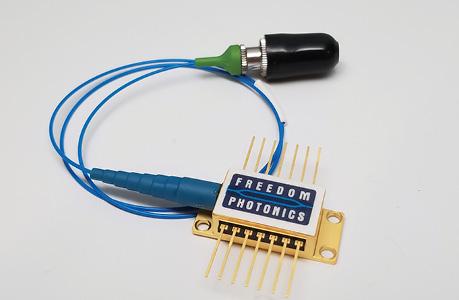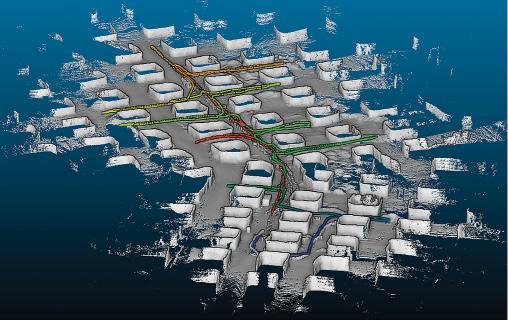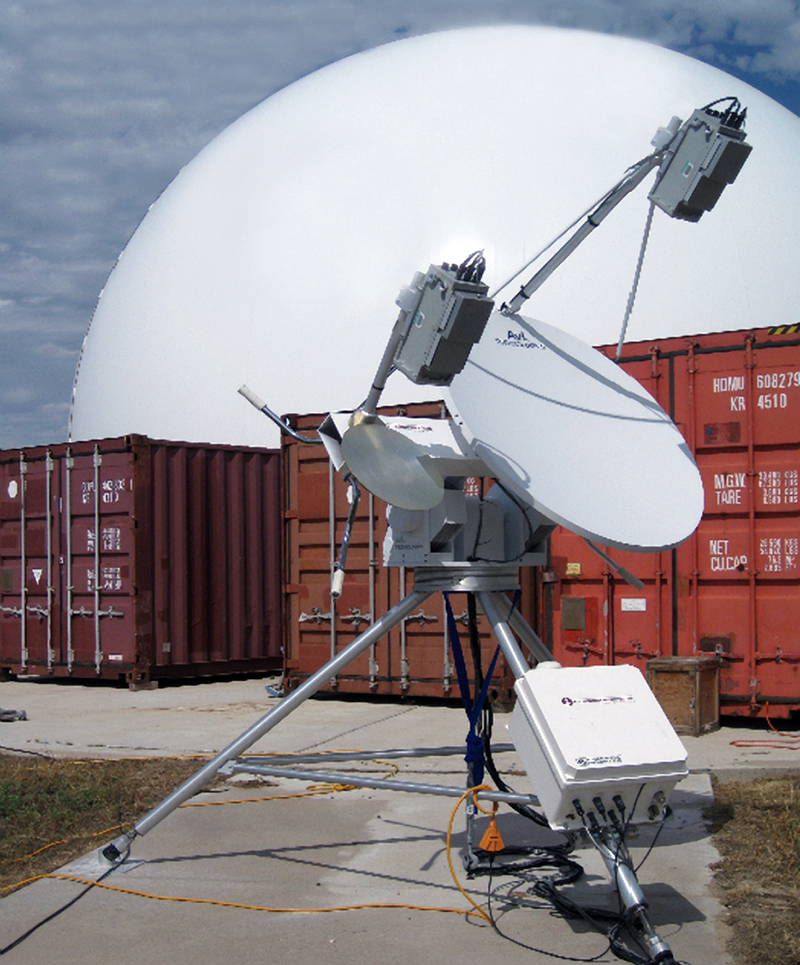
Radiometers Optimize Local Weather Prediction
Originating Technology/NASA Contribution
One of the greatest dangers to aircraft—playing a role in numerous destructive and fatal accidents around the world—comes in the form of droplets of water. Clouds are made up of tiny water particles with diameters typically between 10 and 50 microns. In clean air, cloud droplets can exist in liquid form down to temperatures as low as -40 °C. These subfreezing, liquid clouds are referred to as being “supercooled.” As soon as supercooled droplets contact an aircraft ascending or descending through the cloud cover, they form layers of ice on any unprotected surface, including the leading edges of wings and rotor blades, tails, antennas, and within jet engines. This ice accretion can cause engine damage and dramatically affect the aerodynamics of the aircraft. (On the leading edge of a wing, an ice layer about as thick and rough as a piece of coarse sandpaper can be responsible for as much as a 30-percent decrease in lift and a 40-percent increase in drag.) This can lead to reduced performance and even catastrophic loss of control.
As part of its aeronautics research, NASA has extensively investigated the icing problem, leading to numerous spinoff technologies that are helping reduce the threat. Glenn Research Center has led the Agency’s efforts, testing thermal, chemical, and mechanical anti-icing technologies in its Icing Research Tunnel; developing software tools for modeling ice growth and the impact of icing on aircraft performance; and producing pilot training aids for flight in icing conditions.
Partnership
One way of mitigating the dangers of ice buildup is through the accurate, real-time identification of icing conditions, and researchers at Glenn have studied ways to detect supercooled water droplets in the flight paths of aircraft in and out of airports. One such method involves combining weather radars with devices called microwave radiometers, which measure the energy emission of liquid water and water vapor in the atmosphere at microwave frequencies (between 1–1,000 gigahertz). Combining the ability of the radar to detect cloud and hydrometeor particles—particles big enough to fall, like rain and hail—with the radiometer’s ability to detect liquid and vapor levels, provides a comprehensive picture of particle size, type, and distribution within clouds—essential information for determining icing risk.
Glenn partnered with Radiometrics Corporation, of Boulder, Colorado, to advance microwave radiometer technology for the detection of icing conditions. Supported by Phase I and II Small Business Innovation Research (SBIR) contracts, Radiometrics identified distinct, polarized signatures for liquid and ice cloud particles. These findings instigated further investigation with a narrower beam radiometer, which the company invented through additional Phase I and II SBIR agreements with Glenn. The resulting technology, a pencil-beam radiometer called the NASA Narrow-beam Multi-waveband Scanning Radiometer (NNMSR), is “a pioneering instrument that is seeing things in nature that have never been seen before,” says Randolph Ware, vice president of sales and marketing for Radiometrics. “You can locate this instrument in an airport, look at a narrow beam width along a flight path, and detect the supercooled liquid that creates the icing hazard.”
Testing in conjunction with Colorado State University’s CHILL radar (named after its original location in CHicago, ILLinois) supported the NNMSR’s ability to detect icing conditions, and further evaluation will take place at Glenn. The development of the NNMSR, Ware says, is a credit to the SBIR program.
“SBIR funding is how we continue to create new technologies,” he says. “It is one of the most effective ways for the government to stimulate innovation. Small businesses are the place where jobs grow in this country, so this is a very powerful and important program.”
Product Outcome
While a commercial version of the NASA radiometer is still in the works, Radiometrics has brought to market a modular radiometer, originally developed under the NASA SBIR to enable the pencil-beam technology. The modular radiometer represents the company’s fourth generation of radiometer products.
“These are sealed radiometers that are actually submersible and have much better performance in many ways,” says Ware.
Radiometrics’ radiometers provide thermodynamic profiling of atmospheric conditions, offering continuous temperature, humidity, and liquid profiles up to 10 km in height. These are parameters, Ware says, that are invisible to the eye but define local weather, making the devices powerful tools for improving local, short-term weather forecasting and producing high-accuracy nowcasting (the forecasting of weather within a 6-hour timeframe). The radiometers function robustly in the presence of radio interference and in all weather conditions, and are fully operable via the Internet from anywhere in the world. Essentially, they are hyperspectral atmospheric observatories that can see in all directions, providing complementary measurements to those gathered by standard weather radiosondes.
The company’s customers employ its products for the prediction of weather conditions like fog and convective storms, which are known to produce hail, strong winds, flash floods, and tornadoes. The radiometers are also used to detect ideal situations for weather modification; by locating high concentrations of the same supercooled droplets that create icing hazards, the instruments can indicate prime cloud targets for seeding with nuclei particles like silver iodide or dry ice.
Chinese officials relied on a network of Radiometrics’ radiometers for anticipating short-term weather and weather modification needs for the Beijing 2008 Olympic Games, and a Radiometrics device was also situated in Whistler, Canada, for the same purposes during the 2010 Winter Olympics. Ware says that the company’s networks are going up in China, India, Japan, Korea, and Europe, and are set to be included in a U.S. profiler network established by the National Weather Service. A Radiometrics radiometer is also part of an aviation weather decision support system established at Dubai International Airport to predict short-term weather for air traffic control.
Ware also notes that the company’s modular, polarimetric radiometers have applications aboard ships and for coastal observatories, looking down at the sea surface to detect salinity and temperature. (Polarized radiometers have the same advantage as polarized sunglasses used by fishermen—they are able to see past the reflected surface glare to indentify underlying signals.)
The modular radiometers are also being used in soil moisture studies; to look at snow pack age, depth, and water content; and to assist with satellite sensor calibration and satellite link loss and prediction. The U.S. Department of Energy has ordered a number of Radiometrics’ fourth-generation, modular radiometers for use in the Atmospheric Radiation Monitoring program, a significant contributor to global climate change research. The same qualities that make a radar/radiometer combination ideal for aircraft icing conditions detection research, says Ware, make the NASA SBIR-derived instrument a key tool for understanding the transfer of radiation through clouds, which is dependent on the distribution of particles in clouds and is one of the biggest uncertainties in global climate models.
In keeping with the typical cycle of successful technology transfer, NASA is also benefiting from Radiometrics’ commercialized, SBIR-derived technology. NASA’s Jet Propulsion Laboratory has purchased modular radiometers for its Deep Space Network, a worldwide antenna network supporting solar system exploration.
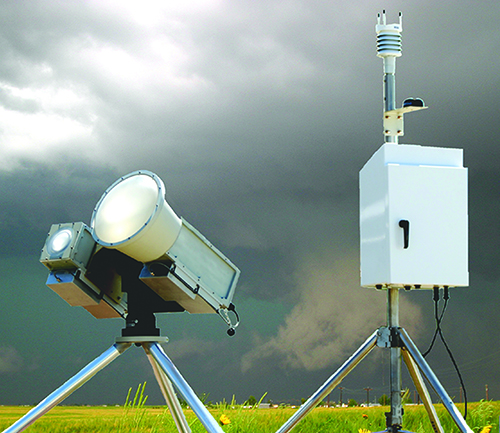
Radiometrics Corporation’s modular polarized radiometers are used in soil, snow, ocean, and atmospheric research.
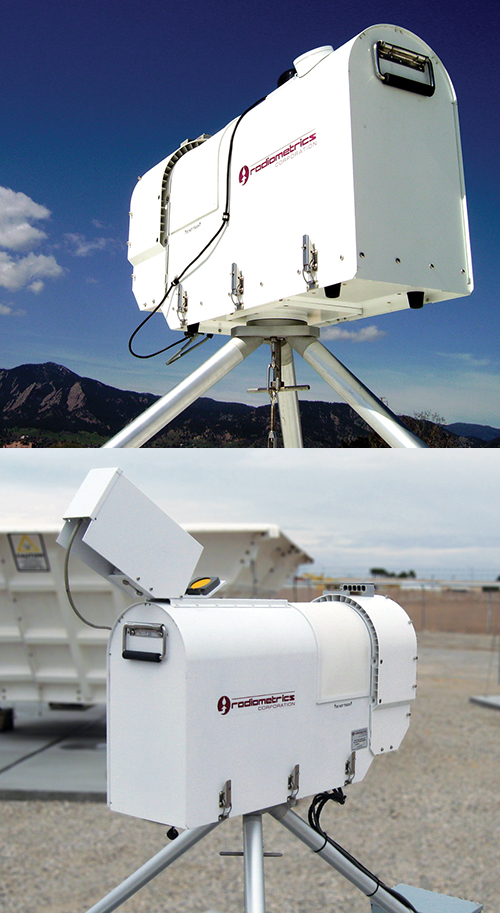
The company’s other radiometers are powerful tools for short-term weather forecasting.

The NASA Narrow-beam Multi-waveband Scanning Radiometer (NNMSR), seen here with the CHILL radar in the background, can determine possible icing conditions along a flight path.












